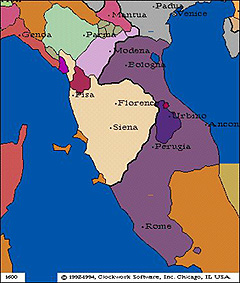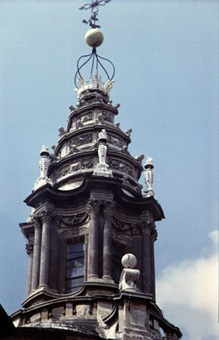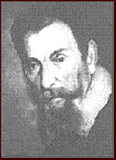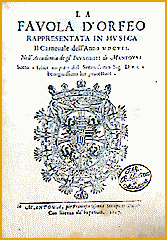 |
 |
 |
 |


Today Italy is one state. However, at the beginning of the modern era Italy consisted of a collection of political units with different systems of government, which often fought each other.
For instance, the city of Venice was the capital of the Venetian Republic, Florence was the capital of the duchy of Tuscany, and Rome was the capital of the Papal States.
On the eve of the seventeenth century, Italy was the most densely populated region in Europe. On the economic level, it was entering a period of stagnation and crisis, after a period of development and growth. This was the result of changes in the textile market, which had been dominated by the Italian cities. In the seventeenth century, the purchasing power of the Ottoman Turks declined, England began to market cheaper textiles, King Henri IV of France set up tax barriers for imported goods in order to promote French industry, and in Spain, the commercial strength of Seville was growing.
In the cultural and scientific spheres, the Aristotelian system was generally accepted. However, in the seventeenth century this system was breaking down in several areas. New styles, such as the Neo-Renaissance and the Baroque, were developed in the plastic arts. The Baroque style offered a new approach which ignored the classical principles laid down by the artists of the Renaissance. This was expressed in the dramatic quality of sculpture and in the splendor and power of architecture; in art, there was a shift from reliance on the laws of geometry to an emphasis on movement and spatial depth.
In the sphere of religion, the Church was struggling to preserve its power and was adopting a hard-line attitude, with criticism, intellectual coercion, and attacks on the individual's freedom of thought.
In medicine, the work of Vesalius showed that Galen's description of the skeleton was not accurate. The circulation of the blood was also discovered; new concepts included the flow of blood and the heart as the center, rather than the liver.

 The Italian composer Monteverdi (1567-1643) moved from writing madrigals (songs for several voices, on both religious and secular subjects) to composing operas whose plots were taken from the Greek and Roman world, such as his opera "Orpheus".
The Italian composer Monteverdi (1567-1643) moved from writing madrigals (songs for several voices, on both religious and secular subjects) to composing operas whose plots were taken from the Greek and Roman world, such as his opera "Orpheus".

In art, Poussin (1593-1665), a French artist who lived and worked in Italy, created a new style. He used religious subjects or scenes from the classical (Greek and Roman) world in a new and different way. His paintings were based on carefully calculated logical analysis, and were not designed to move people's emotions as religious propaganda. In the sciences, Galileo's publications had begun to arouse controversy.

However, only in the 1630s did the Dominicans succeed in convincing the pope, Urban VIII, that the damage Galileo's work caused to the Aristotelian conceptual system could endanger the status of the Church. They singled out Galileo's book "Dialogue on Two World Systems" as likely to lead to public debate that could harm the Church.
 The Venetian Republic
The Venetian Republic
 The Duchy of Tuscany
The Duchy of Tuscany
 The Papal States
The Papal States

| Andrea / | Mail / | Home Page |
|---|
 |
 |
 |
|---|
![]() KNOWMAGINE - http://muse.tau.ac.il/~museum
KNOWMAGINE - http://muse.tau.ac.il/~museum